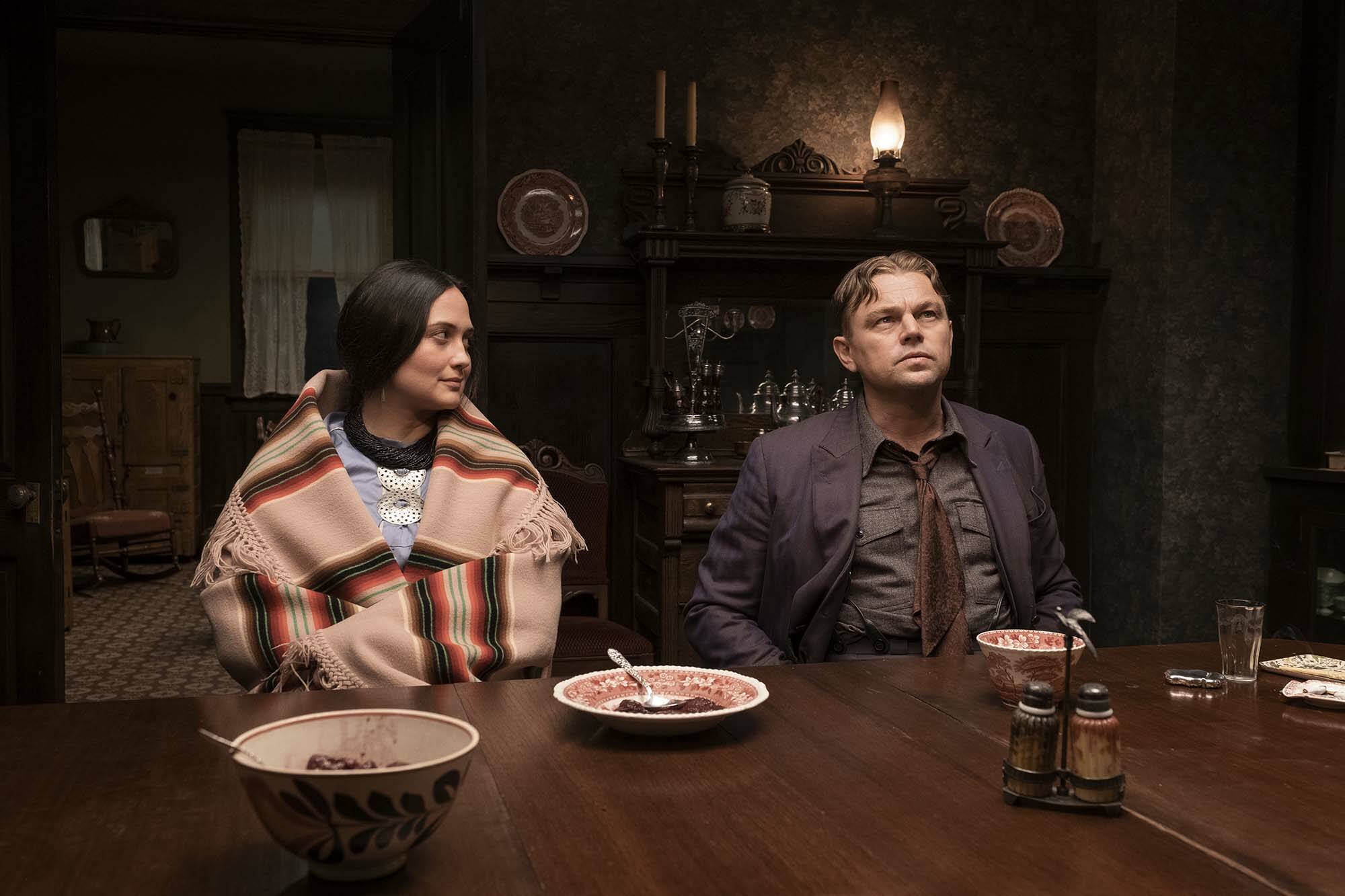“Killers of the Flower Moon,” the latest from renowned director Martin Scorsese, is grueling not just for its tremendous runtime, but also for its bleak and plodding depiction of racism and atrocity in 1920s Oklahoma.
The film stars Leonardo DiCaprio as Ernest Burkhart, a soldier returned from World War I who comes to Oklahoma to live with his uncle, William “King” Hale, played by Robert De Niro. In the community, many members of the Osage tribe are deeply wealthy because of the discovery of oil on their lands. Ernest, at the instruction of King, courts an Osage woman, Mollie Kyle, played in a consistently stunning turn by Lily Gladstone. Ernest and King then over years plot and enact the murder of Mollie’s family members to claim her money for themselves.
The film is based on real people and real crimes that occurred — specifically as detailed in “Killers of the Flower Moon: The Osage Murders and the Birth of the FBI,” a 2017 book by journalist David Grann.
Throughout “Killers,” Scorsese depicts failings of society and personal relationships — justice is withheld from the Osage people as dozens of their friends and family members are brazenly murdered and investigations are stymied by law enforcement and medical officials firmly in King’s pocket. In Mollie’s darkest moments, she closes herself off and only receives medicine and food from her husband — a husband who she thinks she can trust and who is actively poisoning her.
It’s not a very pleasant four hours in a movie theater seat. Of course, it shouldn’t be. It’s an impactful depiction of horrific real events in our country’s not-so-distant past masterfully — if somewhat imperfectly — realized by Scorsese.
Central to the film is a sense of complacency by the people of the community and beyond. For many, that manifests in an openly insidious nature, driven by greed and racism, for others a failure to speak out because of fear or even just utter disregard. Multiple times the film describes delegations sent by the Osage tribal council to Washington, D.C., seeking aid left unanswered. Countless are dead by the time an FBI agent — played by the always-great Jesse Plemons — shows up.
Anything resembling justice dispensed at the end of the film feels hollow in the wake of the unfathomable and entirely unquantified loss of life experienced by the Osage people.
The Osage are also largely shifted to the sidelines by the end of the film — the central narrative landing squarely on DiCaprio’s Ernest as he faces consequences for the crimes he committed rather than on Gladstone’s Mollie as she comes to grips with what her husband has done to her and her family.
That dissonance is made perhaps more apparent by just how good Gladstone is in the film — regularly a standout as she navigates many sequences of grief and understated fury.
“Killers of the Flower Moon” spotlights a dark chapter in American history and brings attention at a scale of production only available to filmmakers like Scorsese. It views tragedy with an imperfect lens, but realizes the crimes of the past and the harm they did even to survivors in stunning detail.
“Killers of the Flower Moon” will play Monday, Nov. 13, at Homer Theatre. Go to www.homertheatre.com for more info.
Reach reporter Jake Dye at jacob.dye@peninsulaclarion.com.


